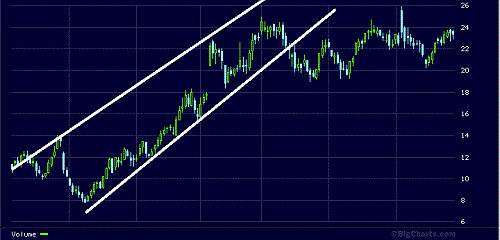Improve Your Technical Analysis and Improve Your Bottom Line
For many option traders, technical analysis is often one of the first steps to entering a position. Most of us already know the basics such as support & resistance or using trend channels. Sometimes, that may be enough to get by, but more often than not, it isn’t.

With the sheer amount of information out there, you may find it very difficult to use technical analysis to your advantage. Often times you may miss key details that give you the edge for better option trades due to information distractions. So our goal is to remove these distractions by streamlining our technical analysis approach.
Here is how we do that:
1. ONLY Use 2-4 Technical Indicators
Every charting program has tons of technical indicators. For example: MACD, RSI, Fibonacci bands, moving averages, OBV, DMI, stochastic, etc. The list goes on and on.
Subscribing to all of these indicators will certainly cause information overload. Therefore you need to select a few, understand how they work, see if they mesh well with your investment style, and simply stick to those.
2. Create an Easy-to-Follow Trading Formula Based on Technical Analysis
That means for every “type” of trade (ie. bull put spread, covered call, iron condor, BRIC), you have created a set of entry rules based off of technical analysis.
As an example, if you notice that the stock has turned bearish because of a broken key resistance level on the right shoulder of a “head and shoulders” chart pattern AND you see a negative divergence on the MACD technical indicator, then that can be your queue to create a covered call trade.
The formula looks like this:
If a [technical analysis event] occurs and is confirmed by [technical indicator 1, 2, and 3], then I will do [trade 1, trade 2, trade 3, etc.].
An example of the formula in use:
If XYZ stock price finishes above the handle on a cup & handle formation and is confirmed by a spike in volume / positive divergence in the MACD / positive crossover of the 50DMA over the 200DMA then I will do a Bull Put Spread.
3. Create an Exit Plan
Whether it is an adjustment strategy, a stop loss, or a predetermined sell threshold, you need an exit strategy. At SJ Options, we like exit plans that don’t require you to be at the computer every second of the open market. To us, it’s about quality of life and having our trades work for us as opposed to working for our trades. So our exit plans involve adjustments that take profits and reduce further risk off our already low risk trades.
If you wanted to sell at a specific target price, create your trend channel, estimate the topside of your channel, and set your sell order in advance. The same works for a sell stop except you estimate a few points below the stocks support level and set the trade there.
4. Back Test Your Trading Formula
Once you create your trading formula, you need to test it to see if it holds up historically. A good hypothetical result off of historical data does not guarantee that your trading formula works without fail; however, it does show that your trading formula works. Bad hypothetical results on the other hand will almost certainly guarantee poor future trades.
You would test your trading formula by running it through market crashes and market booms. You can also look for specific technical patterns like cup & handles, ascending triangles, pennants, or market gaps. Run your trading formula under all of these conditions and see what works and what doesn’t.
5. Paper Trade
Now that you have a sound trading formula, it’s time to put it up to the test. Paper trade the formula. Once you’re in the trade, evaluate all the scenarios that may play out and have your exit plan set in place. Stick to your exit plan regardless of the new events that may be looming in the horizon. When you fail to stick to a plan, things tend to go awry.
Please note that paper trading is not the same as real trading although you may be going through the same motions. Paper trading has all the key components of real trading except EMOTION. Handling emotion, whether it’s the fear of losing money or the euphoria of making money, is only experienced when REAL MONEY is involved.
6. Trust In Your Technical Analysis
It’s time to trade. Evaluate your opportunities based on your technical analysis. Confirm those opportunities with the technical indicators you’ve chosen to be well acquainted with. Evaluate the best trade from your analysis and make it. Determine your exit strategy, set it, and watch your trade work for you.
The problem many traders have is dealing with their emotions. Therefore, you need to be as robotic as possible. So trust in your technical analysis and stick to your plan.
After the trade do a post-trade analysis. Go over your entry point and analyze your exit point. Reflect and tweak your trade formula if need be.
If you’re looking to improve your charting, check out our basic options package coupled with advanced technical analysis. San Jose Options trading strategies are based off of max safety, max reward principles. Find out why we are the the preferred options trading course for risk averse investors.

